Проектная работа «Создание буклета «Экскурсия в школьный музей. Народные промыслы. Глиняные игрушки»
СОДЕРЖАНИЕ
Паспорт проекта
Обоснование проекта ……………………………………………… с.6
Объект и предмет проектирования ………………………………..с.7
Цели и задачи проекта…………………………………………… с.7
Новизна проекта…………………………………………………. …с.8
Принципы проекта ………….……………………………………….с.8
Целевые группы проекта……………………………………………. с.8
Ожидаемые результаты…………. ………………………………….с.8
Ресурсы проекта …………………………………………………….с.9
Деятельность в рамках проекта………………………………… с.9
Устойчивость проекта…………………………………………….с.11
Список литературы ………………………………………………..с.11
Приложение 1. Буклет «Экскурсия в школьный музей. Народные промыслы. Глиняные игрушки»
Народные промыслы. Глиняные игрушки»
ПАСПОРТ ПРОЕКТА
Название проекта | Создание буклета «Экскурсия в школьный музей. Народные промыслы. Глиняные игрушки» | |
Учебный год | 2015-2916 | |
Образовательное учреждение | ГБОУ Школа 904 г. Москва | |
Класс | 5 | |
Предмет (образовательная область) | английский язык | |
Авторы | Иванова Алина, Кариманов Данияр, Лузанова Мария | |
Руководитель | Крылова Ольга Владимировна, учитель английского языка | |
Консультант | Матвеенкова Елена Викторовна | |
Цели и задачи |
| |
Тип проекта | практико-ориентированый, краткосрочный | |
Авторский продукт | буклет | |
Сроки и основные этапы выполнения проекта | — подготовительный этап (выбор темы) — основной этап (оформление творческого проекта) — заключительный этап (защита проекта) | 2015- январь 2016 |
Программы | Microsoft PowerPoint, Office Publisher | |
Краткое описание работы | Вашему вниманию представлена проектная работа на тему «Создание буклета «Экскурсия в школьный музей. | |
Обоснование проекта (Reasons for the Project)
Постановка проблемы, на решение которой направлен проект.
Актуальность, обоснованность выбора темы.
Данный проект направлен на решение следующей проблемы:
Рассказать о народных промыслах (глиняных игрушках) на английском языке и составить рекламный буклет для школьного музея.
Проверка и реализация гипотезы
Чтобы выполнить эту работу, необходимо:
Методы:
Обработка полученных материалов
Поиск фактов из различных источников в сети Интернет.
Формулирование особенностей будущего продукта.
3. Цель и задачи проекта
Цель: Создание буклета
Для достижения данной цели проекта необходимо решить следующие задачи:
Разработать дизайн буклета
Подготовить электронную презентацию
Мы ожидали, что в результате работы мы получим следующие результаты:
Обогащение своего лексического запаса новыми словами и выражениями.

Изготовление буклета
Нами были изучены следующие источники по заявленной проблеме:
http://russia-ic.com/culture_art/visual_arts/940#.VrWk_K1yVR8
http://hnu.docdat.com/docs/index-207931.html
http://www.rukukla.ru/article/gigr/vid/dymkovckaa_igru6ka.htm
http://www.digplanet.com/wiki/Kargopol_toys
http://www.russia-ic.com/culture_art/visual_arts/945/#.VrWp8K1yVR-
4. Новизна проекта:
Проект обладает большим потенциалом развития и направлен на удовлетворение запроса учащихся, учителей, посетителей музея.
Сегодня мы представляем вам продукт, разработанный в ходе проекта.
Практическая значимость данной работы заключается в возможности применения накопленного материала, а также расширения кругозора.
Принципы проекта:
Сотрудничество – комплексная работа и взаимодействие с максимальным количеством партнеров (учителя, учащиеся, родители).
Открытость – возможность включения в разработку и реализацию проекта всех заинтересованных субъектов.
Целевые группы проекта:
Субъекты образовательного процесса
Проект направлен:
Ожидаемые результаты:
Прямые:
Прочное усвоение новых лексических единиц
Систематизация грамматических явлений, требуемых для обоснования проекта
Получение опыта в создании продукта проекта (содержание, дизайн)
Косвенные
Ресурсы проекта
Медиаресурсы:
Для реализации идеи проекта необходимо проанализировать имеющуюся информацию на сайтах по теме проекта
Материально-технические: сканер, компьютер, Интернет, фотоаппарат, принтер
Временные: 2015 — январь 2016
Деятельность в рамках проекта:
Проект предполагает достижение поставленных цели и задач через три этапа: подготовительный, основной и заключительный.
Подготовительный этап (информационный) сентябрь-октябрь 2015года.
Выбор темы проекта, предполагаемый продукт;
Составить список необходимого оборудования (фотокамера, принтер, сканер, ксерокс и пр.)
Определить необходимые источники информации
Сфотографировать предметы
Разработать логическую структуру проекта, плана деятельности и внешнего вида проекта.
Основной этап (практико-ориентированный) ноябрь-декабрь 2015года
Разработать, редактировать и продумать дизайн буклета
Выпустить буклет
Заключительный этап январь 2016 года
1.Подведение итогов. Интерпретация (объяснение) результатов. Рекламирование буклета.
2. Оценка эффективности проекта.
3. Рефлексия.
10. Интерпретация (объяснение) результатов
В ходе работы над проектом мы:
Определили и сформулировали тему, цель, задачи.
Мы сформулировали цель проекта, определили название проекта. Было решено создать печатный буклет и его электронную версию, Данный проектный продукт соответствовал цели проекта и являлся оптимальным способом решения проблемы проекта.
Было решено создать печатный буклет и его электронную версию, Данный проектный продукт соответствовал цели проекта и являлся оптимальным способом решения проблемы проекта.
2. Нашли и изучили информацию, посетили школьный музей
Методы:
В ходе работы мы использовали метод поиска, анализа и группировки полученной информации.
Создание буклета.
Разработали дизайн буклета
Создание буклета (печатный и электронный вариант) в программе Office Publisher
Создание буклета мы начали с изучения советов, полученных и разных источников, в программе Office Publisher мы создали макет буклета, который затем распечатали. И сейчас мы хотим представить вам продукт нашего проекта — буклет.
Заключительный этап:
В результате работы мы создали буклет, который полностью отвечает нашим поставленным целям и задачам: он эстетически оформлен, удобен в употреблении.
Данная проектная работа позволяет повысить интерес к изучению английского языка; осознать свою культуру через контекст культуры англоязычных стран.
Оценка эффективности и результативности проекта
Работая над проектом, мы также, анализировать их данные, научились работать с разными источниками информации, а также повысили свой словарный запас новыми словами.
Возможности развития. Устойчивость проекта:
Особенностью проекта может быть его масштабируемость, дополняемость и доступность.
Наша работа имеет перспективы.
На основе данного проекта предполагается:
Начало формы
Конец формы
FOLK CLAY TOYS.
KARGOPOL
FILIMONOVO
DYMKOVO
The aim of the project is to improve children’s English, enlarge their vocabulary and widen their outlook.
Clay toy is a special kind of folk art. It is created not only for games, but is also used for decorating the house. Clay toys are quite simple, original and expressive.
KARGOPOL TOYS
BRIEF HISTORY
The Kargopol toy is one of the traditional Russian arts and crafts, which is spread in the town of Kargopol of the Arkhangelsk Region, the North of Russia. From long ago lots of dwellers of the town and its suburbs were into pottery and making clay toys.
In the early 1930s, which was a hard time in the history of Soviet Russia, the pottery trade gradually decayed, and toy making had nearly stopped even earlier. Only a handful of masters went on with them.
The earliest of the preserved Kargopol toys are works by I.V. and E.A. Druzhinins, who worked in the 1930-40s. These are mainly single figurines of muzhiks (peasant) and ladies, painted with slaked lime, cinder and colour clays. They are somewhat roughly sculpted, with their flat faces and generalized details of the figure and clothes making them allude to ancient stone images. The painting patterns include ovals, circles, crosses, and patches, also reminiscent of ancient ornamental motifs.
FEATURES
As compared to bright and clear-coloured Filimonovo and Dymkovo toys, these figurines from the northern lands of Russia might seem pretty stern. However, this first impression is only due to the palette including black, dark-yellow and brown colours. As for the toys’ subject matter, they have lots of amusing images, sculpted plainly but with great warmth and folk wit. People are depicted not without psychological description, and so the viewer can envisage the ways of life and manners of the local people (Man Watering a Horse, Man Sowing, Man with a Basket of Mushrooms, etc.)
The Kargopol toy also has compositions of several figures, such as a merry troika (coach-and-three) with passengers in the sledge, dancing figures, and boating figures, and many other scenes, observed by masters to the point. Kargopol craftsmen also liked to depict animals, as well as plots from folk tales.
The toys are sculpted part by part. The basis of the figurine is the trunk, which is together with the head fixed to the pre-shaped skirt. For men’s figures cylinder-shaped legs and arms are fastened to. The modelled items are dried for a week or two and then baked in a stove. The toys are painted with tempera.
For men’s figures cylinder-shaped legs and arms are fastened to. The modelled items are dried for a week or two and then baked in a stove. The toys are painted with tempera.
The Kargopol toy is characteristic of conditional interpretation of an image’s shape, proportions and colouring. All the figurines are a little stocky, with short arms and legs, an oblong trunk, a thick and short neck and a rather big head. As for animals, they are depicted thick-legged and sometimes dynamic.
The modern Kargopol toy is less archaic. Preserving traditional forms, masters nowadays make it more refined, sometimes more clearly accentuating details, and lavishly paint it in oil and tempera; they, however, avoid making it too motley. To enliven the toys artists now add yellow, blue and orange colours.
The main ornamental elements are combinations of crossed lines, circles, leafless twigs, herring-bones, dots and stripes.
Apart from figurines of people Kargopol masters mould horses, cows, bears, deer, and characters of tales and bylinas (Russian heroic epics). One of the most popular characters was and still is the Polkan (the Russian version of Centaur) – half-horse and half-man – with a beard, medals and epaulets. Other fairy characters include the Lion, the Sirin Bird, a two-headed horse, etc.
One of the most popular characters was and still is the Polkan (the Russian version of Centaur) – half-horse and half-man – with a beard, medals and epaulets. Other fairy characters include the Lion, the Sirin Bird, a two-headed horse, etc.
FILIMONOVO TOYS
BRIEF HISTORY
These wonderful handmade ornamented clay toys are a famous handicraft of the village of Filimonovo in the Tula Region. Here lived the last masters who revived the forgotten art in the 1960s. Deposits of fine white clay are located near the village.
A legend says that once upon a time there lived Elder Filimon there, who actually originated the toy tradition here. The toys are amusing and fanciful, but at the same time simple in manner and very expressive.
The toy trade was started by local potters in the mid 19th century. Thanks to white clay of excellent quality they produced clay earthenware and sold it in the local markets starting from the 16th century. Just like in most of the pottery trades the masters worked together with their families. So men would make only pottery and women sculpted and painted toys. The art of Filimonovo toys still remains women’s trade.
So men would make only pottery and women sculpted and painted toys. The art of Filimonovo toys still remains women’s trade.
The majority of Filimonovo toys are traditional whistles. The subject matter is also traditional: the figurines depict ladies, peasant women, soldiers, dancing couples, horsemen, and animals, such as cows, rams with crumples horns, and the fox with the cockerel, as well as mysterious creatures, whose prototypes are hard to define.
FEATURES
Abundant deposits of clay, as rich and soft as butter, were extremely favourable for making toys. These were the peculiar qualities of the clay that determined such an unusual style of the figurines: they all have stretched necks and legs, and prolonged proportions in general. The thing is that rich clay shrinks and cracks when drying, so an artist has to adjust it several times before the toy is completely dry. When adjusting it, they could not but stretch it – this is how the unique Filimonovo style appeared.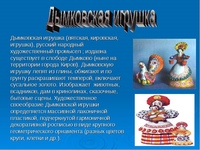
The Filimonovo toys have few details. The ladies have long bell-shaped skirts, smoothly broadening downwards. The skirt seems too large against the upper part of the body. The head and the neck are almost of the same volume; on the head there is a hat or a peasant headgear.
Figurines of men (these are most often cavaliers or soldiers) are high, long-legged, and wearing typical costumes — a military uniform with shoulder stripes, a peaked cap or a hat, and high heeled boots. The high heels provide an additional support for the figurine. Strangely, soldiers often hold a bird under one’s arm.
Filimonovo craftswomen paint their toys with bright aniline paints mixed with eggs, and brush it on with a hen’s feather. In spite of the laconic palette, consisting of crimson, green, yellow and blue colours, the toys are painted bright and cheerful.
The toys painting pattern is also made traditional: horses, cows and rams are painted in stripes, whereas figurines of people are decorated using all the ornamental elements (coloured stripes, dots, ovals, stars, triangles, etc. ) in various combinations.
) in various combinations.
The ornamental details can be deciphered: a circle stands for the Sun, a triangle denotes the Earth, herring-bones and spires symbolize vegetation, growth and life. All these patterns remind us of man-and-nature relation.
The faces of figurines of people always remain white, the eyes, mouth and nose just slightly outlined with small strokes.
Toys from Filimonovo village are truly cheerful, combining roughness and grace, expressiveness of the silhouette and symbolism of pattern, humour and good-nature.
DYMKOVO TOYS
BREAF HISTORY
Colourful Dymkovo figurines, whistles among them, represent the most famous and one of the oldest clay handicrafts of Russia.
The brand name of these peculiar toys comes from the Dymkovo Settlement, today a district of the city of Vyatka (Kirov). It appeared out of love for the pottering tradition in Vyatka lands in antiquity. According to many researchers, the development of the Dymkovo clay toy was related to the ritual spring holiday of Svistoplyaska (i. e. whistle-dance) celebrating the Sun. To take part in the festivity, one needed a clay whistle to make sounds with and a painted clay ball to throw to each other.
e. whistle-dance) celebrating the Sun. To take part in the festivity, one needed a clay whistle to make sounds with and a painted clay ball to throw to each other.
In the 19th century the holiday turned into a boisterous fair, necessarily with whistling. The magic meaning of the festivity was lost. The whistles remained and acquired more fanciful decorative features. Whereas formerly animals had been the main subject, the 19th century saw the appearance of toys that depicted dressed-up women holding babies, or baskets with pies, or bucket yokes, sitting on benches or in boats. Later Dymkovo toy masters turned to town plots, with stylish ladies, townsfolk, officers, tradeswomen and skomorokhi (wandering minstrel-cum-clowns).
The whistles were made in shape of various totem animals, such as the bear, the goat, the sheep, the deer, but as a matter of fact were quite simple, their function being magic rather than decorative. In spite of the ritual meaning of the clay whistles, one can notice certain irony, with which masters designed them. Thus, a whistle bear could be playing some music instrument, and a goat could be wearing funny trousers. Such clay whistles were made exclusively by women and girls preparing for the holiday in advance.
Thus, a whistle bear could be playing some music instrument, and a goat could be wearing funny trousers. Such clay whistles were made exclusively by women and girls preparing for the holiday in advance.
Whatever a Dymkovo toy depicts, it is always distinctive due to its unparallel ornate colouring. The dark and light blue, green, yellow, orange and raspberry colours look very cheerful on the white background. There might be up to ten colours together. The ornament is always rather simple, with checks, stripes, circles, dots, diamonds, and zigzags in various combinations. These simple geometrical patterns, however, bear certain information. Thus, for instance, a wavy blue line stands for water, crossed stripes denote a curb, and a circle with a star in the middle symbolizes the Sun or other celestial bodies.
The method of producing the Dymkovo toys seems also quite simple: a toy is hand moulded of the local red clay mixed with river sand. The whistles are pierced with a special stick.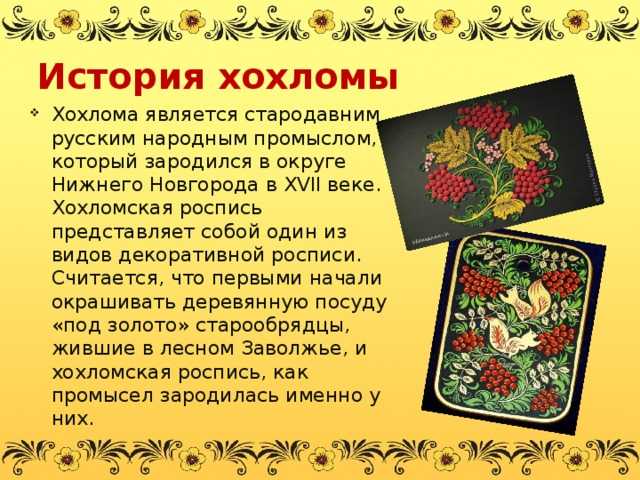 The figurine is made by parts. Separate parts are fastened together with liquid clay, the joints smoothed away with a wet cloth. The toy is dried and baked, and then whitewashed with chalk diluted in milk. Afterwards it is painted.
The figurine is made by parts. Separate parts are fastened together with liquid clay, the joints smoothed away with a wet cloth. The toy is dried and baked, and then whitewashed with chalk diluted in milk. Afterwards it is painted.
Every Dymkovo toy is handmade and unique, existing as the only copy. Every master brings in her own manner and colouring. The Dymkovo toy handicraft still has no serial production, which makes it different from other folk arts and crafts.
CONCLUSION
Presently Russian culture experiences tendencies similar to those in the West, with ethnic motifs becoming an integral part of creativity among sculptors, artists, designers and fashion-designers. There is a hope that the clay toy will not be forgotten, but, on the contrary, will be developed, reconsidered and interpreted on a new level. Rooted in ancient pagan outlook, it can serve as an inexhaustible source of inspiration for a creative person.
Today anyone, a kid or a grown-up, can try and make a clay toy. The main things you need are clay and fancy. Otherwise, a bright toy brought from Russia might become a stunning souvenir and present.
The main things you need are clay and fancy. Otherwise, a bright toy brought from Russia might become a stunning souvenir and present.
SOURCES
http://russia-ic.com/culture_art/visual_arts/940#.VrWk_K1yVR8
http://hnu.docdat.com/docs/index-207931.html
http://www.rukukla.ru/article/gigr/vid/dymkovckaa_igru6ka.htm
http://www.digplanet.com/wiki/Kargopol_toys
http://www.russia-ic.com/culture_art/visual_arts/945/#.VrWp8K1yVR-
Приложение 1
14
Английский язык для бакалавров и магистров
Свинторжицкая И.А., Соломинцева О.В., Лукова Н.В., Шевченко Е.М., Пилат Л.П., Никулина Е.В., Шмагринская Н.В., Дадаян Ю.С., Уманская А.В., Лобанова И.В.
Английский язык для бакалавров и магистров
Учебное пособие по практике устной и письменной речи
Соответствует Федеральному государственному стандарту (третьего поколения)
УДК 80, ББК 81
Рекомендовано:
кафедрой лингвистики и межкультурной коммуникации Российской академии народного хозяйства и государственной службы при Президенте Российской Федерации (заведующий кафедрой доктор филологических наук, профессор А. Н. Долгенко) в качестве учебного пособия по практике устной и письменной речи для студентов бакалавриата и магистратуры неязыковых вузов по направлениям подготовки «Дизайн», «Декоративно-прикладное искусство и народные промыслы», «Дизайн архитектурной среды» и «Строительство».
Н. Долгенко) в качестве учебного пособия по практике устной и письменной речи для студентов бакалавриата и магистратуры неязыковых вузов по направлениям подготовки «Дизайн», «Декоративно-прикладное искусство и народные промыслы», «Дизайн архитектурной среды» и «Строительство».
Протокол заседания кафедры № 08/13 от 02.04.2013г.
Рецензенты:
заведующий кафедрой иностранных языков факультета государственного управления Российской академии народного хозяйства и государственной службы при Президенте Российской Федерации, кандидат психологических наук, доцент С.Ф. Мурашко;
проректор по научной работе Института бизнеса, психологии и управления, доктор филологических наук, профессор Г.Г. Слышкин
Авторы: д. пед.н., проф. Свинторжицкая И.А., к. филос. н., доц. Соломинцева О.В., к. филол. н., доц. Лукова Н.В., к. и. н., доц. Шевченко. Е.М., к. и. н. Пилат Л.П., к. и. н. Никулина Е.В., к. пед. н. Шмагринская Н.В., Дадаян Ю.С., Уманская А.В., Лобанова И.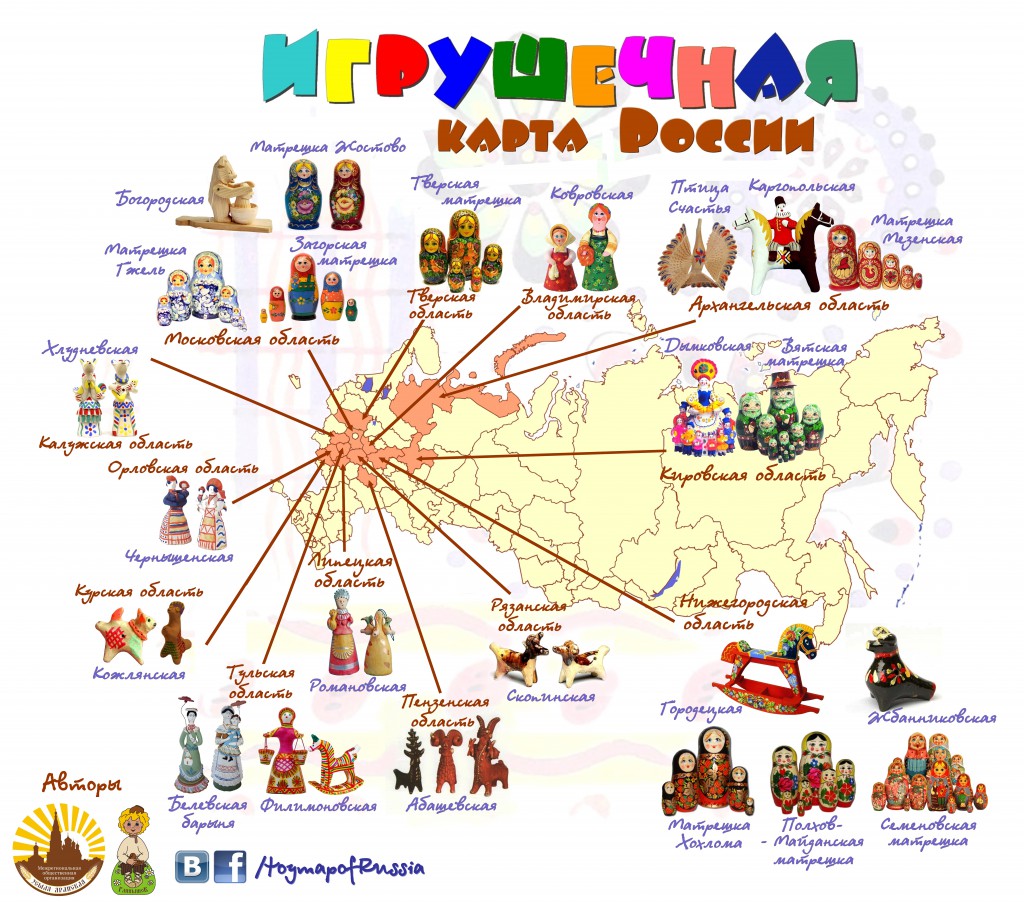 В.
В.
Английский язык для бакалавров и магистров. Учебное пособие по практике устной и письменной речи. – М.: Международный издательский центр «Этносоциум», 2013. – 218 с.
Данное учебное пособие предназначено для продолжения изучения иностранного языка под руководством преподавателя, состоит из 4-х частей и материалов для самостоятельной работы, направленное на развитие у студентов навыков чтения и понимания иноязычного текста по бытовой, общественно-политической и профессиональной тематике и подготовку их к реферативному переводу иноязычного текста. Кроме того, пособие направлено на повторение и закрепление грамматического материала, а также развитие навыков говорения на базе проблематики, представленной в текстах. Учебное пособие содержит все предусмотренные рабочей программой темы модулей, индивидуальные творческие задания, справочный грамматический материал, лексико-грамматические тесты и ключи к ним, мультимедийные программы.
Пособие предназначено для работы в группах студентов бакалавриата и магистратуры неязыковых вузов по направлениям подготовки «Дизайн», «Декоративно-прикладное искусство и народные промыслы», «Дизайн архитектурной среды», «Строительство» с целью повышения их лингвистической компетенции.
СОДЕРЖАНИЕ
| Предисловие | 4 |
| PART I: My family and my house | 6 |
| TEXT № 1 | 6 |
| TEXT № 2 | 11 |
| TEXT № 3 | 18 |
| TEXT № 4 | 22 |
| TEXT № 5 | 27 |
| PART II: My social life | 36 |
| TEXT № 1 | 36 |
| TEXT № 2 | 41 |
| TEXT № 3 | 49 |
| TEXT № 4 | 60 |
| PART III: Arts | 63 |
| Text № 1 Artists | 63 |
| Text № 2: Drawing | 69 |
| Text № 3: Painting | 81 |
| PART IV: My future profession | 95 |
| «Графический дизайн» | 95 |
| «Дизайн среды», «Дизайн архитектурной среды», «Строительство» | 113 |
| «Декоративно-прикладное искусство и народные промыслы» | 124 |
| «Дизайн костюма» | 137 |
| Материалы для самостоятельной работы | 185 |
| Грамматический справочный материал | 185 |
| Лексико-грамматический тест для самоконтроля | 207 |
| Ключи к лексико-грамматическому тесту | 217 |
НАРОДНОЕ ИСКУССТВО | определение в кембриджском словаре английского языка
Переводы фольклорного искусства
на китайский (традиционный)(尤指鄉村)民間藝術, (尤指鄉村)民間藝術活動…
90 004 Подробнеена китайском (упрощенном)
(尤指乡村)民间艺术, (尤指乡村)民间艺术活动…
Увидеть больше
на португальском
Arte Popular…
Узнать больше
Нужен переводчик?
Получите быстрый бесплатный перевод!
Как произносится народное искусство ?
Обзор
фолиевая кислота
фолиант
лиственный БЕТА
народный
народное творчество
народный танец БЕТА
народная этимология
народный герой
Народная медицина
Проверьте свой словарный запас с помощью наших веселых викторин по картинкам
- {{randomImageQuizHook.
 copyright1}}
copyright1}} - {{randomImageQuizHook.copyright2}}
Авторы изображений
Пройди тест сейчас
Слово дня
инфракрасный
Великобритания
Ваш браузер не поддерживает аудио HTML5
/ˌɪn.frəˈred/
НАС
Ваш браузер не поддерживает аудио HTML5
/ˌɪn.frəˈred/
Инфракрасный свет — это тип света, который кажется теплым, но невидимым.
Об этом
Блог
Назовите это увольнением и стравливаете свое остроумие! (Идиомы и фразы в газетах)
Подробнее
Новые слова
Минимум по понедельникам
В список добавлено больше новых слов
Наверх
Содержание
Переводы на английский язык
за пределами Великобритании · V&A
Идеи, которые определили Движение искусств и ремесел в Великобритании, вскоре распространились за границу — сначала в Центральную Европу, затем в Америку и, наконец, в Японию в середине 1920-х годов, помогая сформировать национальное движение Мингей (народное искусство).
Европа 1880–1914
В апреле 1897 года группа венских художников, скульпторов и архитекторов (во главе с художником Густавом Климтом) порвала с городскими художественными кругами и сформировала художественное движение под названием Венский сецессион. Отвергая популярные ретроспективные стили, сецессионисты стремились соединиться с последними зарубежными художественными движениями, включая британское искусство и ремесла. Вдохновленные идеями Уильяма Морриса, сецессионисты хотели воссоединить изобразительное и прикладное искусство и использовать изделия ручной работы, чтобы помочь спасти австрийское общество от того, что они считали «моральным разложением» индустриализации. В 1900.00 Венский Сецессион пригласил художников из Англии, Шотландии и Франции принять участие в 8-й выставке группы, предоставив Британскому искусству и ремеслам первую международную платформу.
Вдохновленные идеями Уильяма Морриса, сецессионисты хотели воссоединить изобразительное и прикладное искусство и использовать изделия ручной работы, чтобы помочь спасти австрийское общество от того, что они считали «моральным разложением» индустриализации. В 1900.00 Венский Сецессион пригласил художников из Англии, Шотландии и Франции принять участие в 8-й выставке группы, предоставив Британскому искусству и ремеслам первую международную платформу.
В 1902 году два члена Сецессиона, архитектор Йозеф Хоффманн и художник Коломан Мозер, основали «Wiener Werkstätte» (Венские мастерские) с основной целью «принести искусство в дом» с помощью хорошо продуманных предметов домашнего обихода. Образцом для этого нового предприятия послужила Гильдия ремесел английского дизайнера Чарльза Роберта Эшби, которую Хоффман посетил во время поездки в Лондон. Сочетая приверженность искусству и ремеслам к традиционным, высококачественным методам производства с верой в прогрессивную эстетику, Wiener Werkstätte производила эталонные проекты в металлоконструкциях, мебели, стекле, керамике и текстиле. Другие важные венские дизайнеры, создающие товары для дома в это время, включают Йозефа Нидермозера и архитекторов Отто Вагнера и Адольфа Лооса.
Сочетая приверженность искусству и ремеслам к традиционным, высококачественным методам производства с верой в прогрессивную эстетику, Wiener Werkstätte производила эталонные проекты в металлоконструкциях, мебели, стекле, керамике и текстиле. Другие важные венские дизайнеры, создающие товары для дома в это время, включают Йозефа Нидермозера и архитекторов Отто Вагнера и Адольфа Лооса.
Германия
Ряд колоний немецких художников создавали себя по образцу британских групп искусств и ремесел, таких как Гильдия ремесленников, наиболее известная из которых находится в Дармштадте. Во главе с австрийским архитектором и дизайнером Йозефом Марией Ольбрихом в период с 1901 по 1914 год в рамках проекта было создано множество примеров «современной живой культуры» в виде полностью меблированных частных вилл, квартир и домов для рабочих в районе Дармштадта Матильденхёэ. Влияние британских идей искусства и ремесел о важности ремесла также можно увидеть в работах таких дизайнеров, как Генри ван де Вельде, бельгийского архитектора, художника и дизайнера интерьеров, чьи работы оказали значительное влияние на немецкую визуальную культуру. начало 20 века.
Влияние британских идей искусства и ремесел о важности ремесла также можно увидеть в работах таких дизайнеров, как Генри ван де Вельде, бельгийского архитектора, художника и дизайнера интерьеров, чьи работы оказали значительное влияние на немецкую визуальную культуру. начало 20 века.
В Германии модель производства, одобренная British Arts and Crafts, в целом считалась слишком антииндустриальной. Дизайнеры страны часто рассматривали технологию как законное средство достижения эффективного производства при сохранении качества. Например, на Ричарда Римершмида повлияли идеи искусства и ремесел, но в своих объединенных мастерских в Дрездене он разработал дизайн «художественной мебели», основанной на машинном производстве. А в 1907 группа влиятельных дизайнеров создала организацию, основанную на очень прагматичном применении принципов искусства и ремесел. «Deutscher Werkbund» (Немецкая ассоциация ремесленников) стремилась улучшить дизайн повседневных предметов домашнего обихода в сотрудничестве с признанными крупными производителями — идея, реализованная в таких проектах, как электрический чайник Петера Беренса для AEG (1908 г.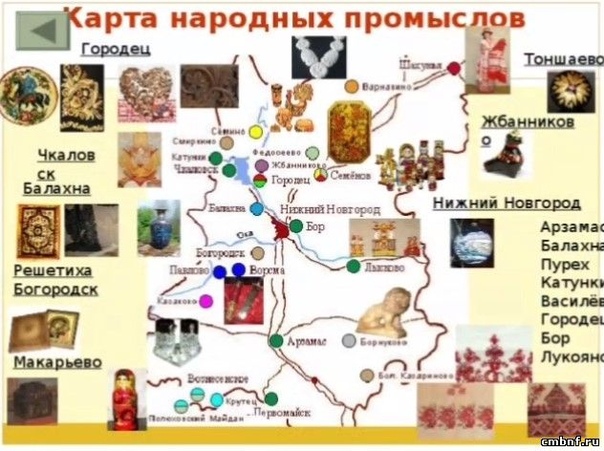 ).
).
Скандинавия
В скандинавских странах в этот период большая политическая независимость вызвала националистические настроения и дебаты о необходимости новой культурной идентичности. Даже в более физически удаленных странах, таких как Финляндия и Норвегия, дизайнеры могли следить за разработками в Великобритании и других частях Европы. Модель искусства и ремесел, сочетающая ремесло и традиции в сочетании с инновациями, обеспечила основу, в которой отдельные лица и члены небольших мастерских могли создавать новые и уникальные работы. Однако это возрождение традиционных ремесел по-прежнему зависело от покровительства высших слоев среднего класса.
Браслет, Evald Nielsen, ок. 1915, Дания. Музей №. М.11-2012. © Музей Виктории и Альберта, Лондон Серебряная посуда была особенно хорошо поддержана Георгом Йенсеном, датчанином, создавшим самые знаменитые образцы начала 20-го века.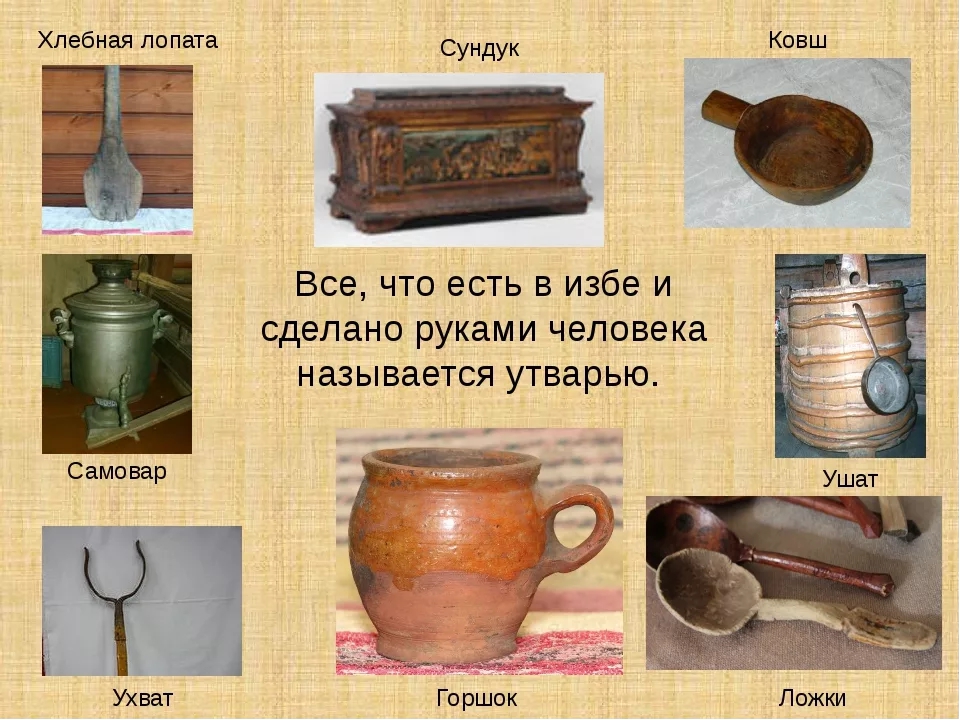 Точно так же Эвальд Нильсен, другой датский ювелир, придерживался принципов ремесла и качества при производстве своих поразительных ювелирных изделий. В Финляндии новое осознание национальной идентичности (территория страны оставалась в составе Российской империи до 1917) нашли выражение в росте дизайна и искусства в целом. В ряде мастерских производился радикально современный дизайн, в том числе мастерские в Порвоо, основатель которых пригласил влиятельного английского керамиста Альфреда Уильяма Финча, получившего образование в Брюсселе, для работы там.
Точно так же Эвальд Нильсен, другой датский ювелир, придерживался принципов ремесла и качества при производстве своих поразительных ювелирных изделий. В Финляндии новое осознание национальной идентичности (территория страны оставалась в составе Российской империи до 1917) нашли выражение в росте дизайна и искусства в целом. В ряде мастерских производился радикально современный дизайн, в том числе мастерские в Порвоо, основатель которых пригласил влиятельного английского керамиста Альфреда Уильяма Финча, получившего образование в Брюсселе, для работы там.
Россия
В России в конце 19го и начала 20 века тяжелые социальные и экономические лишения сосуществовали с желанием сохранить многочисленные и разнообразные местные культуры страны. Это привело к повторному открытию местной народной (домашней и функциональной) архитектуры и дизайна, а также утверждению национальной гордости. Там, где британские мастера декоративно-прикладного искусства нашли идеальный стиль в рисунках средневекового периода, в Центральной Европе главным источником вдохновения была историческая крестьянская деревня.
Там, где британские мастера декоративно-прикладного искусства нашли идеальный стиль в рисунках средневекового периода, в Центральной Европе главным источником вдохновения была историческая крестьянская деревня.
В Абрамцевской колонии к северу от Москвы художники работали над возрождением качественных традиций русского декоративно-прикладного искусства. Такие дизайнеры, как Виктор Хартман, Василий Поленов, Виктор Васнецов и Елена Поленова, производили мебель и изразцы ручной работы, украшенные русскими изображениями. Это положило начало сосредоточению внимания на региональных темах, которые позже расширились за счет постановки драмы и оперы (с визитами влиятельных фигур, в том числе Константина Станиславского и Николая Римского-Корсакова).
Навесной шкаф (детали) по проекту Елены Поленова, изготовление Абрамцевской мастерской, 1880 – 1890, Россия. Музей №. W.4-2004. © Музей Виктории и Альберта, Лондон
Музей №. W.4-2004. © Музей Виктории и Альберта, ЛондонАмерика: 1890–1916
Общества искусств и ремесел и экспериментальные сообщества, созданные по образцу британских образцов, были впервые созданы в Массачусетсе и Нью-Йорке и их окрестностях в начале 1890-х годов. Американские дизайнеры обращали внимание на свое родное наследие, ландшафт и климат, и их практика в целом была более коммерческой, чем у их европейских коллег. Среди самых известных дизайнеров Восточного побережья, отстаивавших идеалы искусства и ремесел, был Густав Стикли. Произведенные в его мастерских в Сиракузах, штат Нью-Йорк, проекты Стикли отражали его веру в «честность, простоту и полезность», а также важность создания недорогих предметов мебели для домов рабочих. Эта неприукрашенная эстетика стала известна как «стиль ремесленника».0165 The Craftsman , влиятельный журнал, издававшийся Стикли между 1901 и 1916 годами.
Чарджер, Густав Стикли, около 1905 г., США. Музей №. М.3-2009. © Музей Виктории и Альберта, Лондон
Дизайн
М.3-2009. © Музей Виктории и Альберта, Лондон
ДизайнArts and Crafts был особенно влиятельным в Чикаго, который стал базой для архитекторов и дизайнеров «Школы прерий». Плоский ландшафт Среднего Запада вдохновил Фрэнка Ллойда Райта и его современников на создание «приземленной» домашней архитектуры, которая предлагала радикальную альтернативу эстетике из стекла и стали новых небоскребов Чикаго. Ллойд Райт и его соратники внесли революционные изменения в отечественный дизайн. Они открыли интерьер, убрали накладной орнамент и привнесли в свой дизайн местные растения через абстрактные мотивы. На Западном побережье братья Чарльз и Генри Грин, ведущие калифорнийские архитекторы и дизайнеры в области искусств и ремесел, относились к дому как к «полному произведению искусства». Их мебель, известная своими изысканными столярными изделиями и использованием роскошного красного дерева, была разработана специально для каждой комнаты.
Детская симфония, окно, Фрэнк Ллойд Райт, 1912, США. Музей №. С.115:1-1992. © Музей Виктории и Альберта, Лондон
Музей №. С.115:1-1992. © Музей Виктории и Альберта, ЛондонЯпония: 1926 г. – конец Второй мировой войны
Возглавляемое философом и критиком Янаги Соэцу движение Мингей («Народные ремесла») в Японии было официально основано в 1926 году. влияет. Философия Мингей ввела идею «непосредственного восприятия», интуитивной способности обнаруживать красоту, которая «рождается», а не «создается». Основанное на вере в то, что скромные товары могут выражать прекрасные эстетические качества, движение выступало за использование исторических народных ремесел в качестве шаблона для производства предметов домашнего обихода, собирая обширные коллекции предметов коренных народов. Помимо сбора «шаблонов», дизайнеры Mingei также создавали модельные комнаты, пытаясь убедить средний класс принять новый гибридный образ жизни, отражающий быстро модернизирующееся японское общество, сочетая японские и западные черты.
Гравюра на дереве, Мунаката Сико, 1954, Япония. Музей №.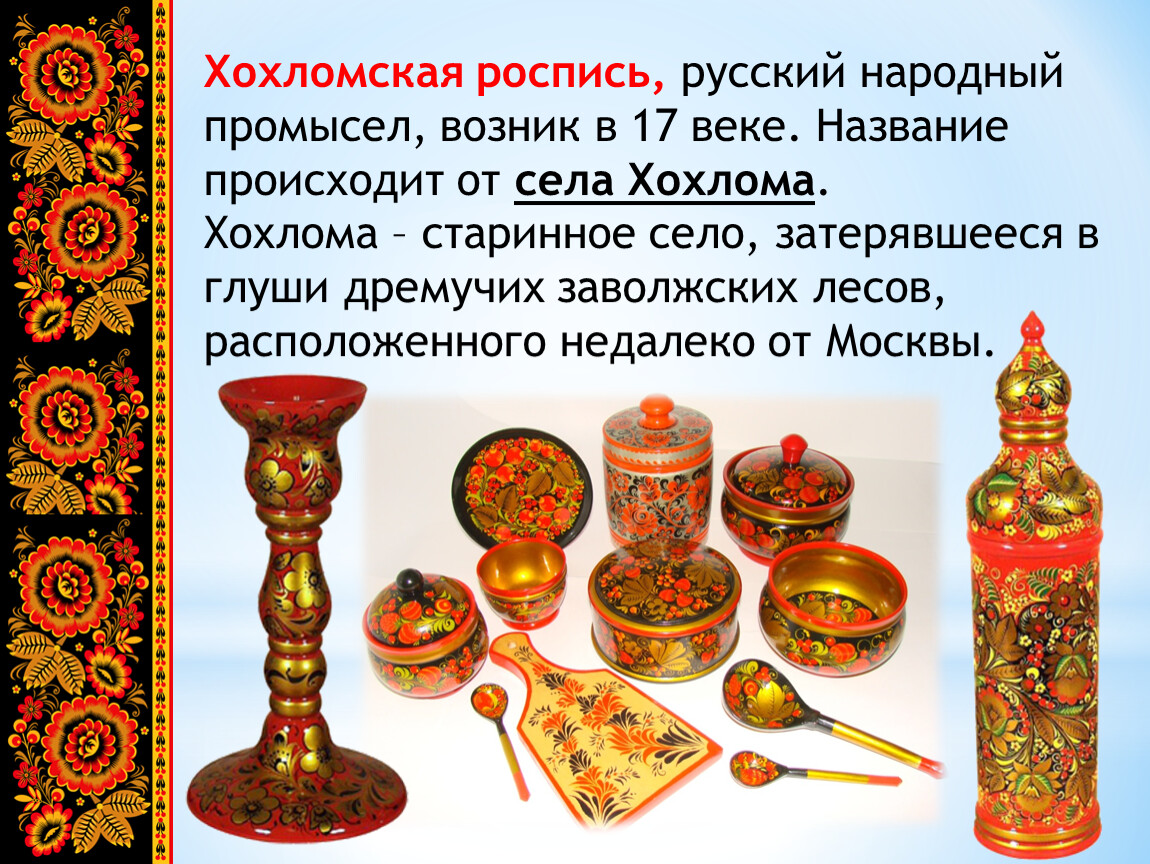


 Народные промыслы. Глиняные игрушки» «. Данная работа предоставляет возможность учащимся улучшить свои знания по английскому языку, расширить кругзор
Народные промыслы. Глиняные игрушки» «. Данная работа предоставляет возможность учащимся улучшить свои знания по английскому языку, расширить кругзор
 copyright1}}
copyright1}}